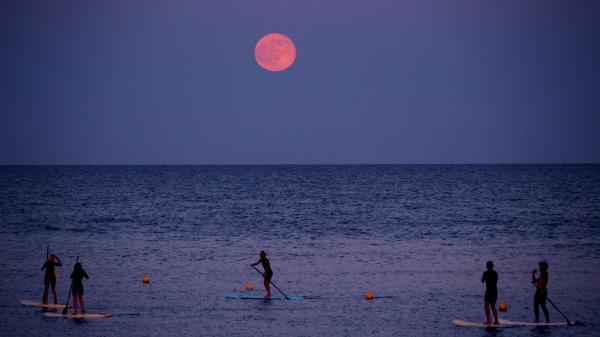"Dream, Dream, Dream! Conduct these dreams into thoughts, and then transform them into action."
- Dr. A. P. J. Abdul Kalam
"Dream, Dream, Dream! Conduct these dreams into thoughts, and then transform them into action."
- Dr. A. P. J. Abdul Kalam
18 Jun 2024
A Global Miracle ~
For those who love to gaze at the night sky, the upcoming June full moon promises a celestial treat. Known as the "strawberry moon," this full moon will rise in the evening sky over the United States on Friday, June 21, the day after the summer solstice. While its name might suggest a red hue, the strawberry moon will likely appear golden and unusually large, hovering low on the horizon.
According to astronomers, the June full moon will offer a unique viewing experience. The Old Farmer's Almanac describes this moon as "the lowest we've seen in years," a result of its timing so close to the solstice, when the sun is at its highest point in the sky. This phenomenon, known as the "Moon Illusion," causes the moon to appear larger and more colorful than usual.
Bob Bonadurer, the director of the planetarium at the Milwaukee Public Museum, explains that the strawberry moon is the most colorful full moon of the year because it travels low and shallow across the sky. As the moon takes this low arc, more of its light passes through the Earth's atmosphere, giving it an orange or yellow tint.

The full moon will reach its peak fullness at 9:08 p.m. EDT on Friday, June 21. However, the moon will appear full for about three days around this time, from Thursday night through Sunday morning, according to NASA's Gordon Johnston. For the best viewing experience, the Old Farmer's Almanac suggests looking towards the southeast soon after sunset. There, you'll see the moon rising, large and golden, in the skyline.
NASA notes that this will be the year's lowest full moon, reaching only 21.9 degrees above the southern horizon at 1:20 a.m. on Saturday. This low positioning adds to the moon's unique appearance, enhancing its size and color due to the atmospheric effects.
Despite its name, the strawberry moon does not owe its moniker to its color or appearance. The name originates from Native American traditions and the Old Farmer's Almanac, marking the time of year when strawberries are harvested. This traditional name highlights the moon's significance in agricultural cycles rather than its visual characteristics.
This full moon is particularly special as it occurs the day after the summer solstice, the longest day of the year. Full moons near the solstices happen about every 19 to 20 years, making this a relatively rare celestial event.
Skywatchers and astronomy enthusiasts have much to look forward to with the June full moon. Its low arc, golden hue, and significant timing near the summer solstice create a perfect opportunity for observation and appreciation of the night sky. So, mark your calendars for June 21, and don't miss the chance to witness the enchanting strawberry moon in all its glory.